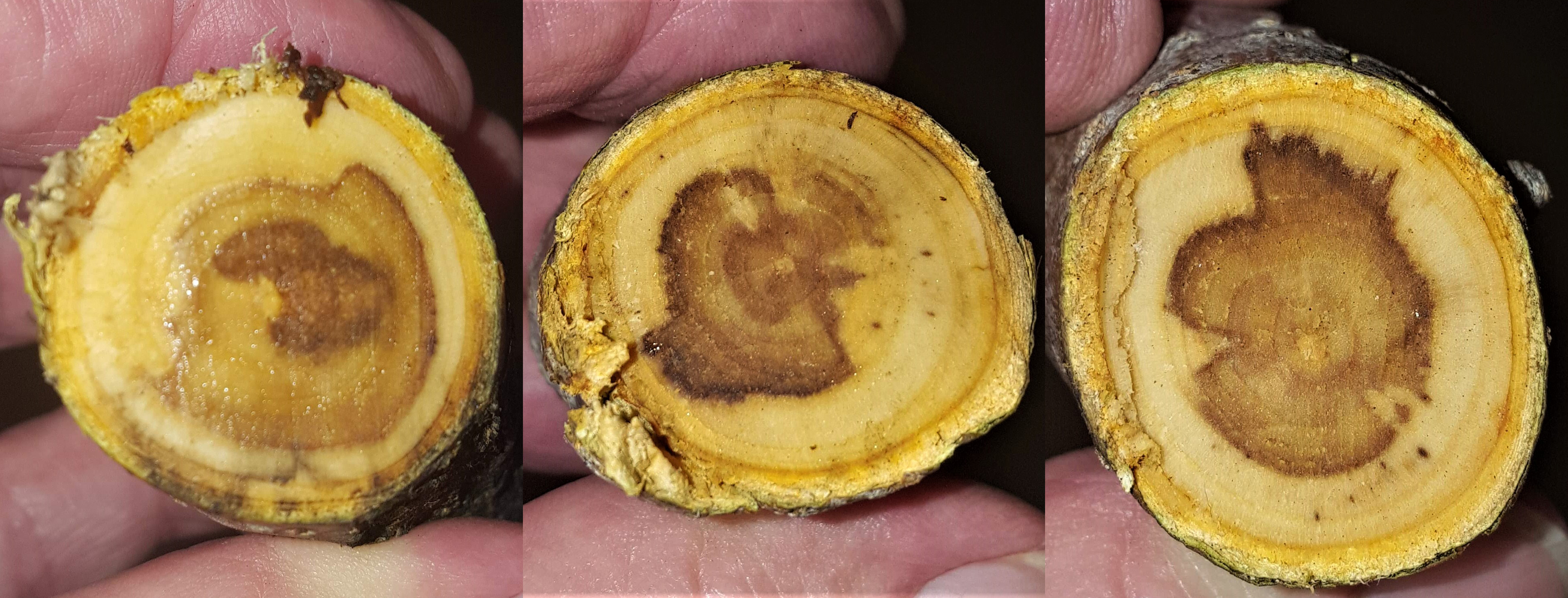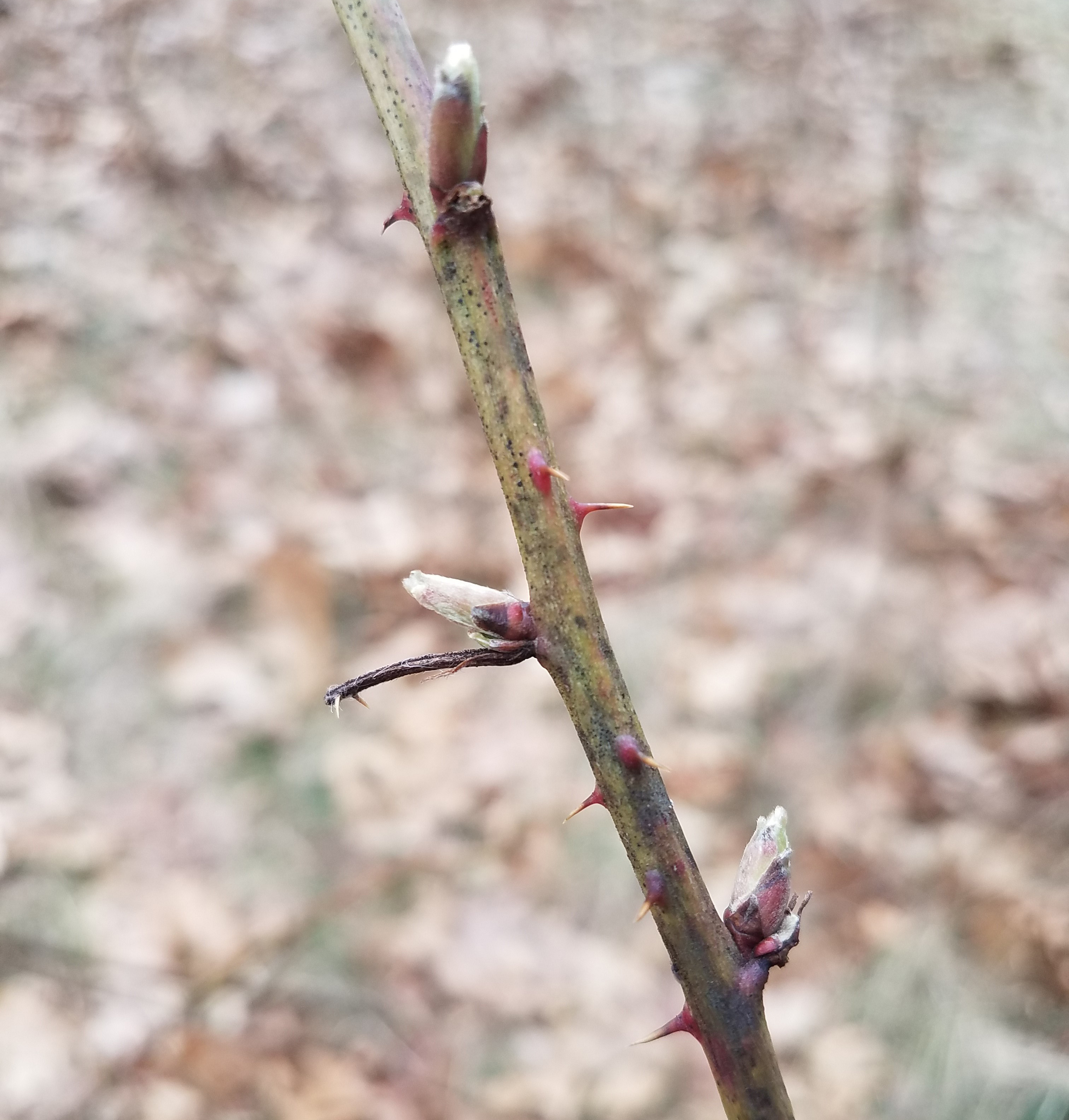Southwest Michigan fruit update – March 31, 2020
Buds are swelling for many fruit crops in southwest Michigan.

Weather
After a relatively mild winter, temperatures in March were relatively cool. Temperatures last week rose from lows below freezing and highs near 40 to lows near 40 and highs in the 50s. We picked up 31 growing degree days (GDD) base 42 and only 6 GDD base 50 over the past week. Buds are beginning to swell.
The weekend was wet and rainy with rainfall totals ranging from 1 to 2.5 inches. Soils are wet. Soil temperatures are approaching 50 degrees Fahrenheit. We are about normal for growth for late March. This could easily change depending on how quickly we warm up.
|
Southwest Michigan GDD summary from March 1-29, 2020 | |||
|---|---|---|---|
|
Station |
GDD 42 F |
GDD 45 F |
GDD 50 F |
|
Benton Harbor (SWMRC) |
76 |
49 |
20 |
|
Lawton (Lawton) |
73 |
46 |
17 |
|
Fennville (TNRC) |
60 |
37 |
13 |
|
Average for the SW region |
73 |
47 |
18 |
|
Average last week |
42 |
28 |
12 |
The forecast for the upcoming week is for warming days with highs climbing to 60. Nighttime lows will be above freezing in the 30s. There is a chance of rain this weekend. Next week we expect warmer than normal temperatures with highs near 70 or above. This will cause rapid plant growth.
Tree fruit
We do not expect any winter injury this year although some trees may have damage from last year. Growers are generally encouraged by the slow start to the season. A slow start delays bud growth, this reduces the risk of a damaging spring freeze. Fruit tree buds are swelling. It would take cold temperatures down below 20 F to cause damage to flower buds.
Tree fruit crop potential is good. Cool and dry conditions allowed growers to make good progress pruning. Soils have only just begun to dry out, making fieldwork and spraying difficult. Check blocks for evidence of San Jose scale on branches to determine the need for oil sprays. If you are going to use oil on stone fruit, those sprays need to go on quickly before the buds open. Trees damaged by January 2019 lows may continue to show decline. Damage symptoms include split trunks, internal brown tissue and gumming.

Apricots buds are swollen and should be at red tip by the end of the week.
Peach and nectarine buds are swelling. Dormant sprays of copper or other appropriate fungicides will reduce peach leaf curl. Low levels of copper also suppress bacterial spot populations. Rains with wet periods over 11 hours right now could be infections for peach leaf curl.

Cherry buds are swelling. We are still in the window when copper sprays can be safely applied to sweet cherries. Copper applications may also reduce bacterial canker in cherries.
Japanese plums are at white side and green tip. European plums appear dormant. Prune out black knot and dispose of the knots by burning or removing from the orchard. Sanitation is an important step in managing this disease.
Apple buds are expected to be at silver tip early next week. Gingergold is showing some green tissue in warm sites. The current cool temperatures will allow scab ascospores to mature, so many spores will be available in the early stages of apple development. Copper sprays for early scab control and fire blight suppression should be applied soon.
Pear buds are swollen.
Small fruit
Grapes show no movement.
Blueberry flower buds are swollen. Fields are very wet. Growers still have time to apply copper, Sulforix or lime sulfur products to suppress early season diseases.
Strawberries have greened up but new leaves are not yet emerging from the crown. Overwintering mulches should be removed and raked between the rows. Growers are looking at early season herbicides to control overwintering weeds.
Brambles are at green tip. Now is the time for lime sulfur sprays to suppress anthracnose. Dormant pruning should be completed soon. In summer bearing raspberries, last year’s primocanes should be headed (cut back) to the desired height and any remaining floricanes from last year should be removed. Fall bearing raspberries should be cut or mowed to the ground. Lime sulfur treatments for anthracnose can still be applied.

Upcoming meetings
Due to restrictions on travel and in-person meetings, our grower meetings will be moving online. We will be using Zoom for these meetings. Here is more information on Zoom.
- Preseason southwest Michigan fruit update, Thursday, April 2, 7 to 8:30 p.m.
- Blueberry kickoff meeting, Friday, April 3, 1 to 4 p.m.
- Grape kickoff meeting, Thursday, April 23, 1 to 4 p.m.
- Southwest Monday fruit updates will be online starting April 13
- Spring tree fruit online meetings are planned for the noon hour starting April 13.
Related articles
- Freeze damage depends on tree fruit stage of development
- Early season sprays for managing San Jose scale
- 2013 bloom dates for southwest Michigan tree fruit crops
- Using Enviro-weather’s regional overnight temperature report during cold events
- Treat peach leaf curl now
- Managing bacterial canker in sweet cherries: What are the options?
- Early insect control with horticultural oils
- Dormant oil for tree fruit pest management in 2015
- Scouting and management of mummy berry in blueberries



 Print
Print Email
Email


